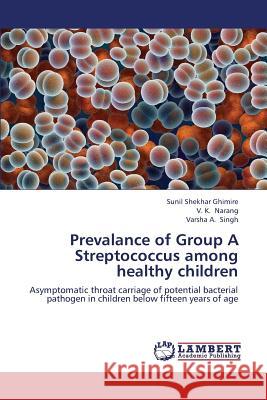Prevalance of Group a Streptococcus Among Healthy Children » książka
Prevalance of Group a Streptococcus Among Healthy Children
ISBN-13: 9783659374432 / Angielski / Miękka / 2013 / 84 str.
Acute pharyngitis is a common illness in children and adults. Its etiology includes a wide variety of microbial agents. Group A Streptococci (GAS) are the most frequently isolated pathogens in acute pharyngotonsilitis cases in school-aged children. In children, approximately 20% of pharyngitis cases are caused by GAS.15 Streptococcal sore throat is one of the most common bacterial infections of childhood. GAS are responsible for the great majority of such infections and frequently colonize in the throat of an asymptomatic person.GAS consists of a single species, Streptococcus pyogenes. Within 4 to 12 hours of after birth, viridians streptococci become established as the most prominent numbers of the resident flora and remain so for life. They are probably originated from the respiratory tracts of the mother and attendants. The predominant organisms in the upper respiratory tract, particularly pharynx, are encountered by non hemolytic, α-hemolytic Streptococcus, Neisseriae, Staphylococci, Diphtheroids, Haemophili, Pneumococci, Mycoplasma, and Prevotellae are also encountered.
Acute pharyngitis is a common illness in children and adults. Its etiology includes a wide variety of microbial agents. Group A Streptococci (GAS) are the most frequently isolated pathogens in acute pharyngotonsilitis cases in school-aged children. In children, approximately 20% of pharyngitis cases are caused by GAS.15 Streptococcal sore throat is one of the most common bacterial infections of childhood. GAS are responsible for the great majority of such infections and frequently colonize in the throat of an asymptomatic person.GAS consists of a single species, Streptococcus pyogenes. Within 4 to 12 hours of after birth, viridians streptococci become established as the most prominent numbers of the resident flora and remain so for life. They are probably originated from the respiratory tracts of the mother and attendants. The predominant organisms in the upper respiratory tract, particularly pharynx, are encountered by non hemolytic, α-hemolytic Streptococcus, Neisseriae, Staphylococci, Diphtheroids, Haemophili, Pneumococci, Mycoplasma, and Prevotellae are also encountered.











